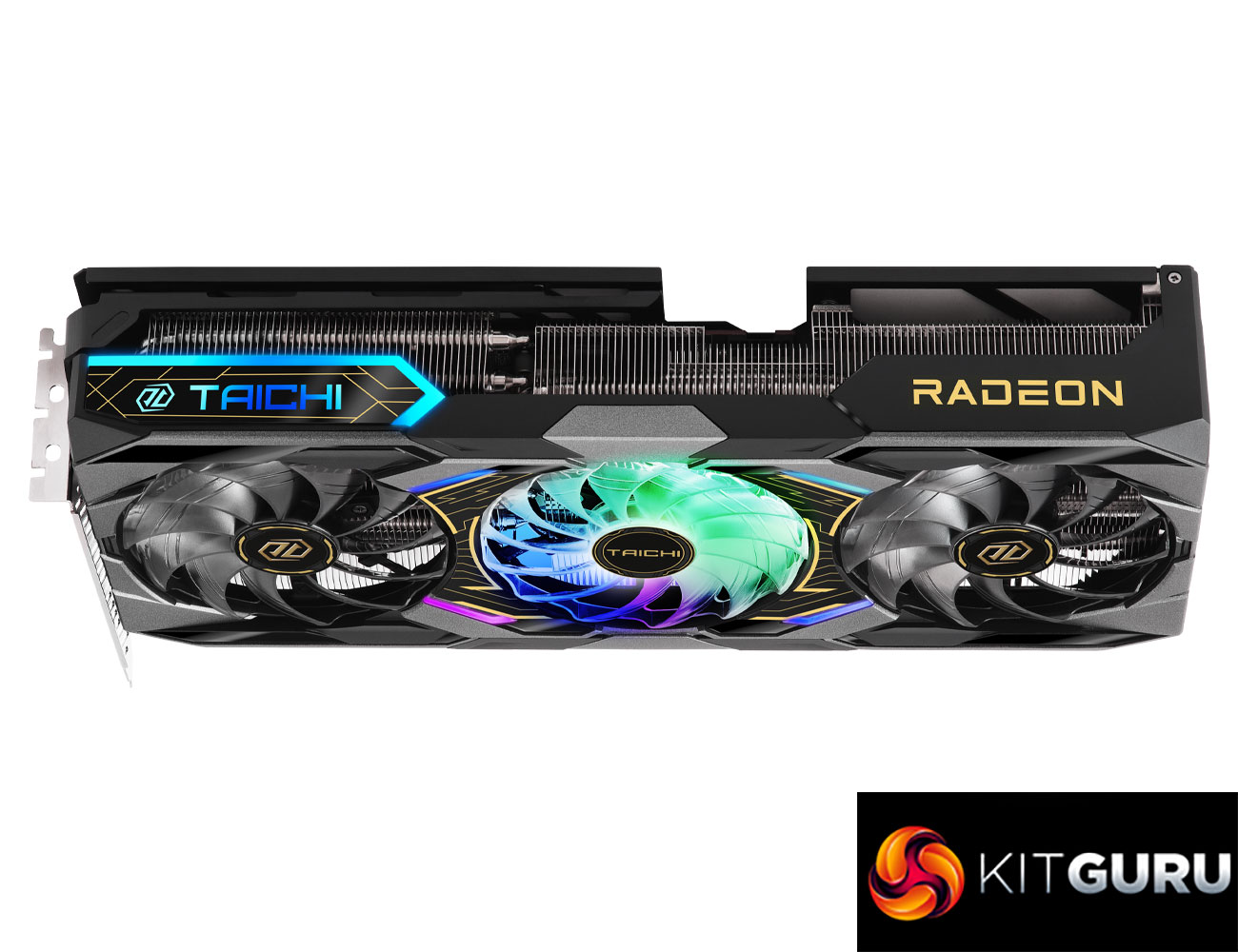It feels like we've been hearing about AMD's RDNA 4 GPUs for months. We were first briefed on the cards before CES, but in a strange twist of events, the actual announcement went AWOL and it wasn't until last week that all the details around the RX 9070 series were finally revealed. I've been testing the RX 9070 XT for the last few days and there's no doubt this is an impressive graphics card.
As we've come to expect from AMD, rasterisation performance is very strong, trading blows with the more expensive RTX 5070 Ti and coming out on top by an average 6% margin in my testing at 1440p. That puts it on par with the RTX 4080 Super and RX 7900 XTX, while it delivers a 38% uplift over the RX 7900 GRE. I do encourage our readers to check out as many reviews as possible though, as performance versus the GeForce competition can vary dramatically from game to game, so other outlets may well find different overall margins.
Still, there's no question this is a highly capable GPU. I do think it's best paired with a high refresh-rate 1440p monitor, but it can do 4K gaming without a problem – you may just want to tweak image quality settings a touch, or enable upscaling in the form of FidelityFX Super Resolution (FSR), but more on that in just a moment.
Ray tracing performance has also come on hugely, with AMD making several architectural tweaks to improve matters in this area. We saw performance improve by 11% on average over the RX 7900 XTX, but certain titles showed gains of up to 50%, which is a huge generational improvement. It seems like the more ray traced effects a game deploys, the bigger the uplift versus RDNA 3.
However, those sorts of scenarios are also the games where Nvidia proves strongest, as the 9070 XT still trails the RTX 5070 Ti by margins of 40-50% in path traced titles, including Alan Wake 2 and Black Myth: Wukong. The gap is just 11% in Cyberpunk 2077 using RT Ultra settings though, and 8% in Returnal, to give just two examples of the clear progress AMD has made in this regard. Even then, I still feel that Nvidia remains the obvious choice if you want to enable high fidelity ray tracing, especially considering the increasing number of path traced games hitting the market.
I also looked at FSR 4 upscaling as part of this review, with AMD's new ML-based algorithm delivering substantial improvements to image quality when compared to FSR 3.1. It even holds its own against Nvidia's DLSS 4 Transformer model in the few examples I looked at, though further analysis is required beyond what I was capable of today. AMD does need to continue to work hard to improve game support though – it's great that titles supporting FSR 3.1 can be ‘upgraded' to FSR 4 via the Adrenalin driver, but that's still a relatively small proportion of games out there, especially when you compare the number of titles that support DLSS Super Resolution.
As for power draw, AMD officially rates the RX 9070 XT for 304W TBP. Given there's no reference card, I tested an ASRock Taichi model today, and while this does run at reference clock speeds, with a 2970MHz boost, it seems ASRock has bumped the power, given I saw an average of 320W over the twelve games tested. That means the 9070 XT's performance per watt is only a small improvement over RDNA 3, but it's the RX 9070 (non-XT) that really shines here, given it's 12% slower yet pulls about 30% less power. That's enough to make it the most efficient card we've tested for 4K gaming, though that doesn't translate to the 9070 XT – it seems AMD prioritised higher clocks and all out performance for this model, while efficiency was more of a focus for the RX 9070.
That comparison between the two 9070-series SKUs is particularly interesting when we factor in the price, and it quickly became clear that the RX 9070 XT is the one to get. That's because we found it to be some 14% faster on average, yet the $50 price difference works out at just a 9% premium, so the more expensive card actually offers better value. This is the exact same thing we saw when comparing the RX 7900 XTX to the 7900 XT at launch, and when looking at the 7800 XT versus 7700 XT. I'd thought that AMD would have learned by now, but the cheaper card should offer better value, otherwise what's the point? Right now, we can only recommend you spend the extra 50 bucks on the XT, else wait for the inevitable price cut on the non-XT card.
Overall, AMD has a very solid card on its hands in the shape of the RX 9070 XT. Raster performance is where this GPU shines, offering highly compelling value versus the RTX 5070 Ti given it trades blows with the GeForce GPU, but for $150 less. That's based on the MSRP anyway, and right now I haven't been able to find a single RTX 5070 Ti actually in stock at that price – so real-world pricing in the short term could work even more in AMD's favour. That said, the cynic in me would not at all be surprised to see a sudden and seemingly miraculous influx of Nvidia cards landing at MSRP in the coming weeks, but let's see how that pans out…
Still, as good as it is, I don't think the RX 9070 XT has quite struck a knock-out blow against the RTX 5070 Ti. Yes, it has improved hugely in terms of both ray tracing and FSR upscaling, but as mentioned, the 5070 Ti is still the stronger overall choice if you value ray tracing, while DLSS Super Resolution has a much wider foothold in the market than FSR. Nvidia also has the benefit of stronger AI performance, especially in our LLM benchmarks, while the 5070 Ti is the more efficient GPU.
However, credit where it is due, the AMD RX 9070 XT is a very strong contender in this market segment and shows real improvement versus RDNA 3. It's more than met its target of delivering highly compelling value against Nvidia’s RTX 5070 Ti when it comes to rasterisation, with a 25% reduction in cost per frame – a terrific result for AMD and something that will appeal to a lot of PC gamers right now. Let's hope supply remains strong and prices stick close to MSRP, as this is exactly what the GPU market needs.
A final word on the ASRock Taichi card we used for our testing today. It runs cool and quiet while offering a range of extra features, including dual-BIOS and eye-catching ARGB lighting. Memory temperatures could be lower, but we will have to see how other partner cards compare.
You will be able to buy the AMD RX 9070 and 9070 XT from tomorrow, March 6th.
Pros
- Very strong 1440p performance, while also viable at 4K.
- Slightly faster on average than the RTX 5070 Ti for rasterisation while costing $150 less.
- Ray tracing is significantly more viable than with RDNA 3.
- $599 price translates to a strong value proposition.
- FSR 4 looks very promising.
- The obvious choice over the RX 9070 (non-XT).
Cons
- Still struggles in more demanding ray traced/path traced games.
- Significantly less efficient than the RX 9070.
- FSR, while significantly better, lacks the near-universal game support of DLSS.
- Nvidia has the edge when it comes to AI.
KitGuru says: The RX 9070 XT is a very compelling graphics card. We can see why some may still want to shell out the premium for the RTX 5070 Ti, but at $599 this could be the shake up the GPU market needs.
 KitGuru KitGuru.net – Tech News | Hardware News | Hardware Reviews | IOS | Mobile | Gaming | Graphics Cards
KitGuru KitGuru.net – Tech News | Hardware News | Hardware Reviews | IOS | Mobile | Gaming | Graphics Cards




